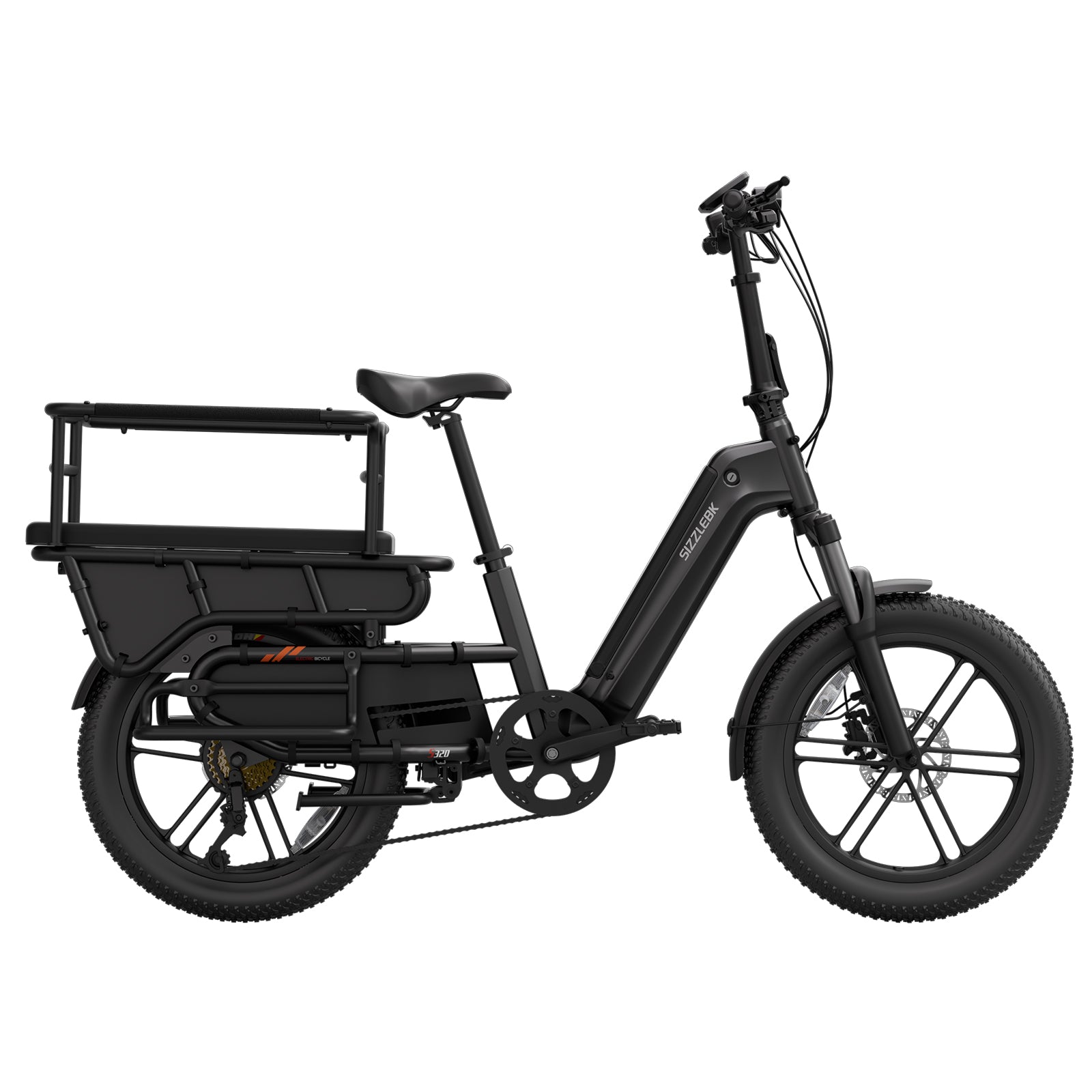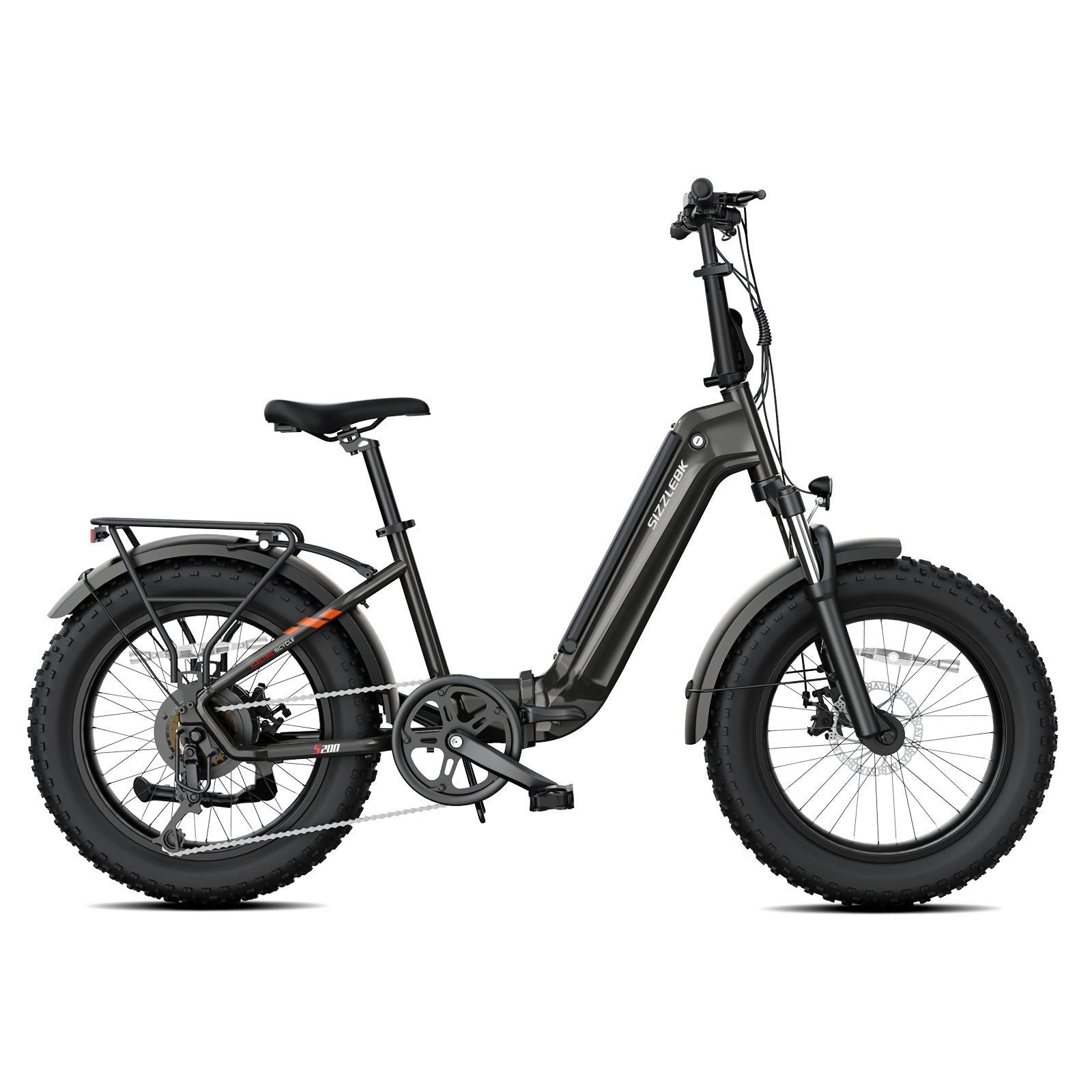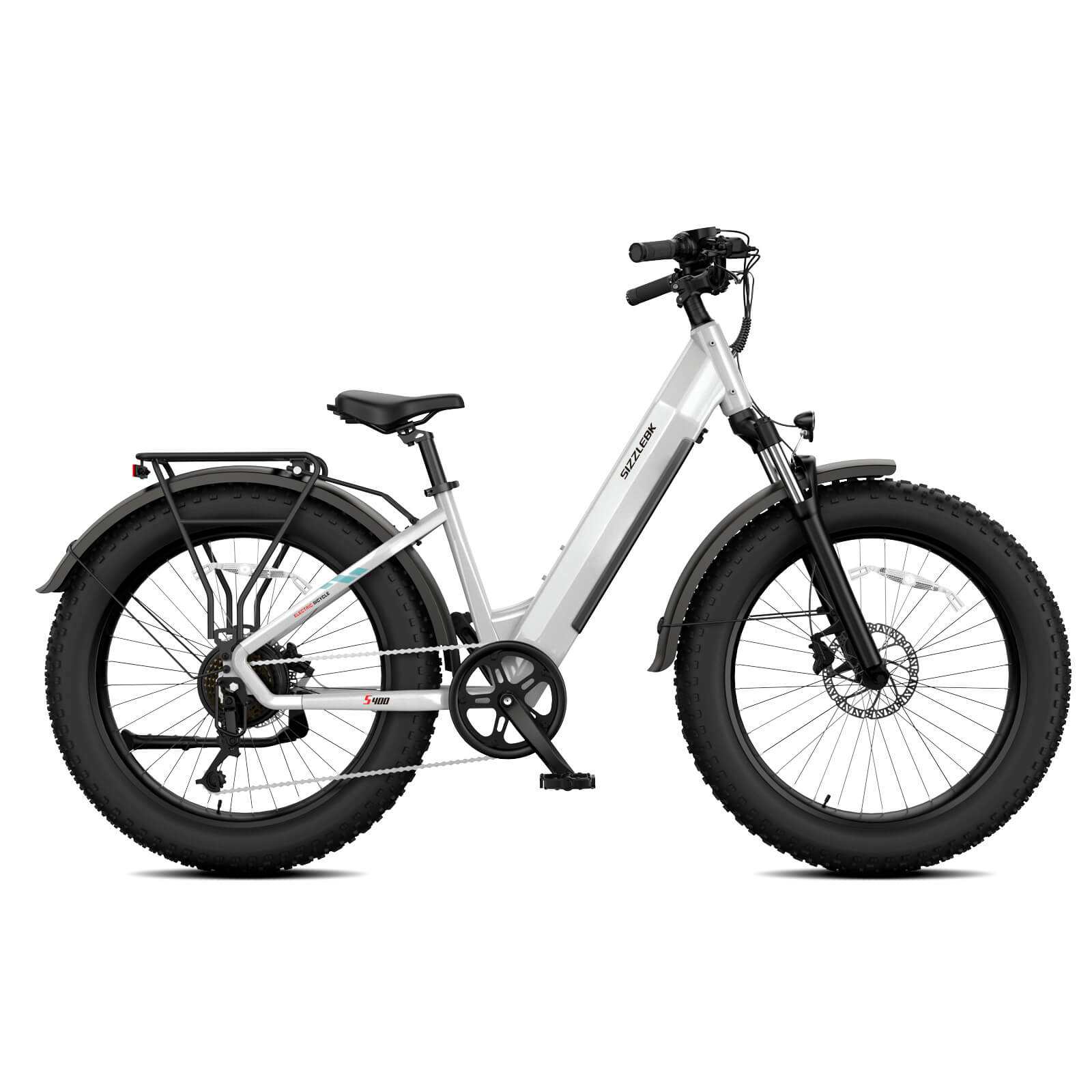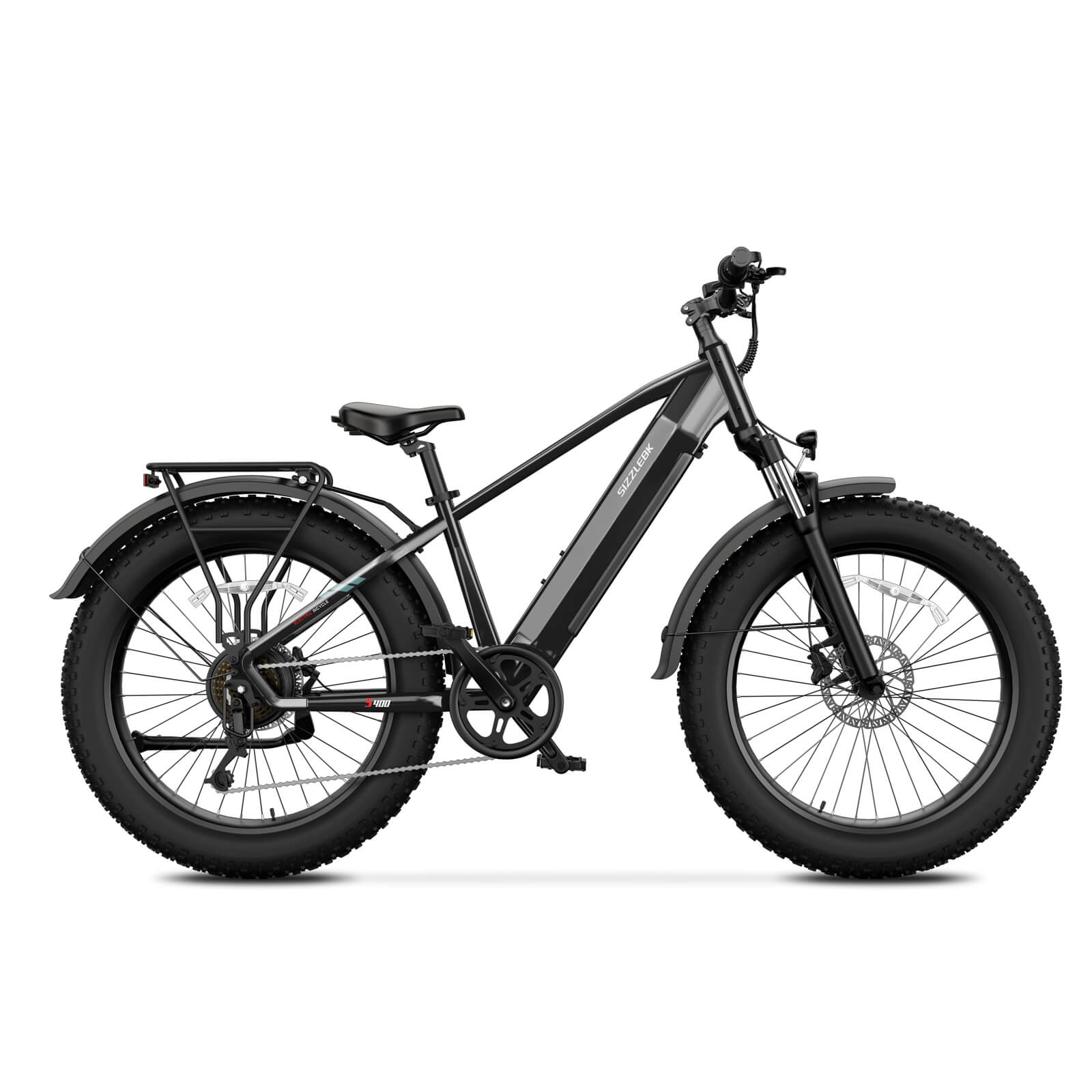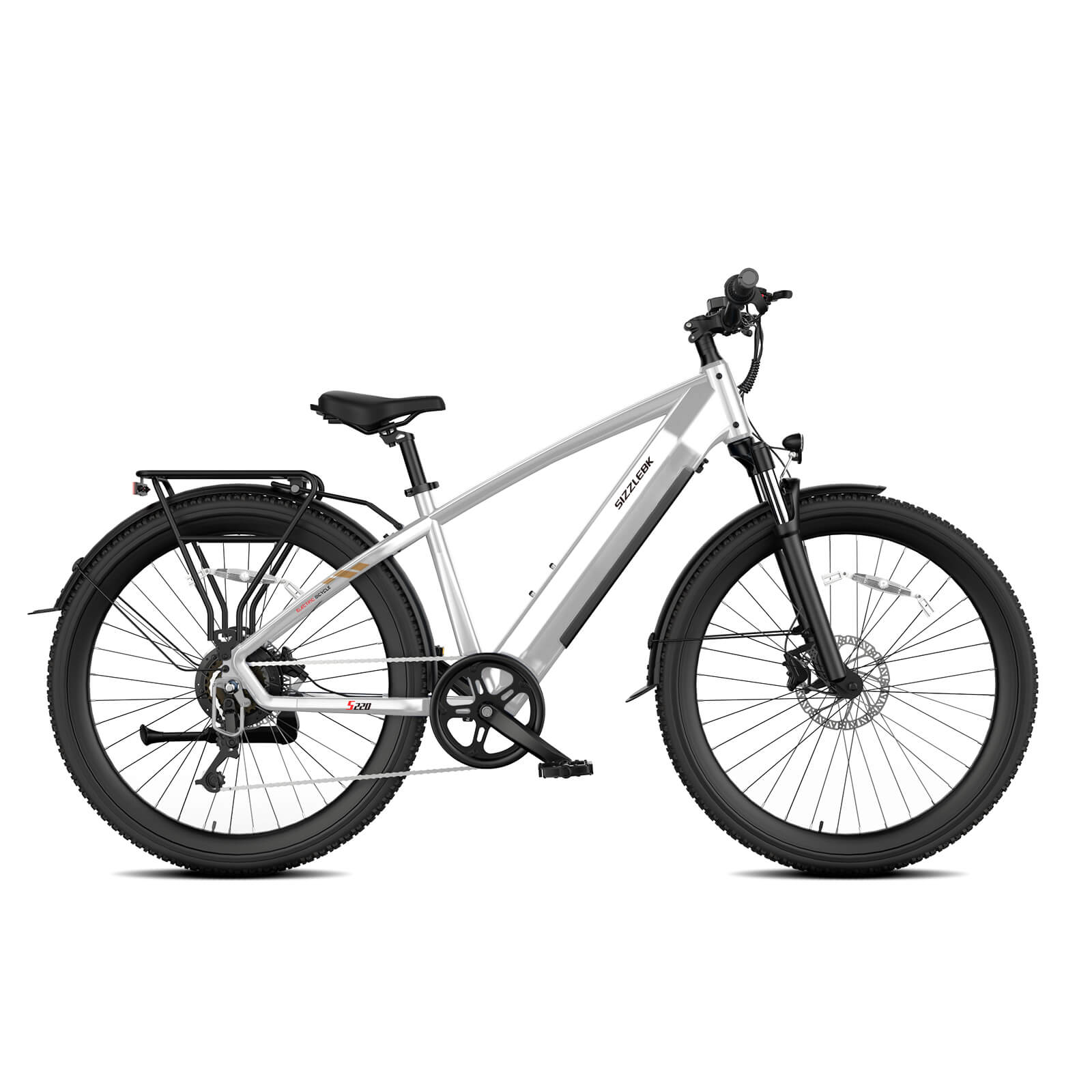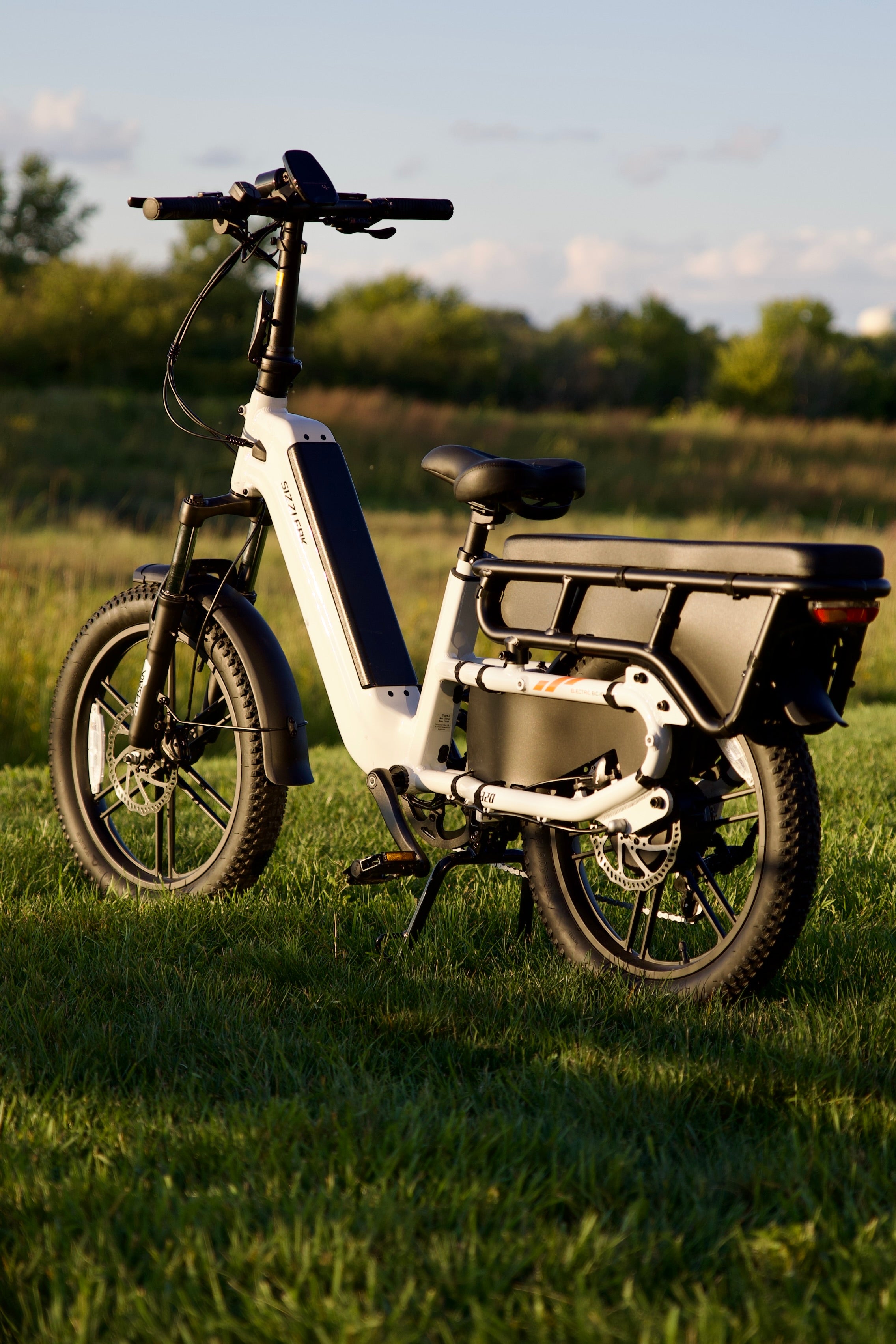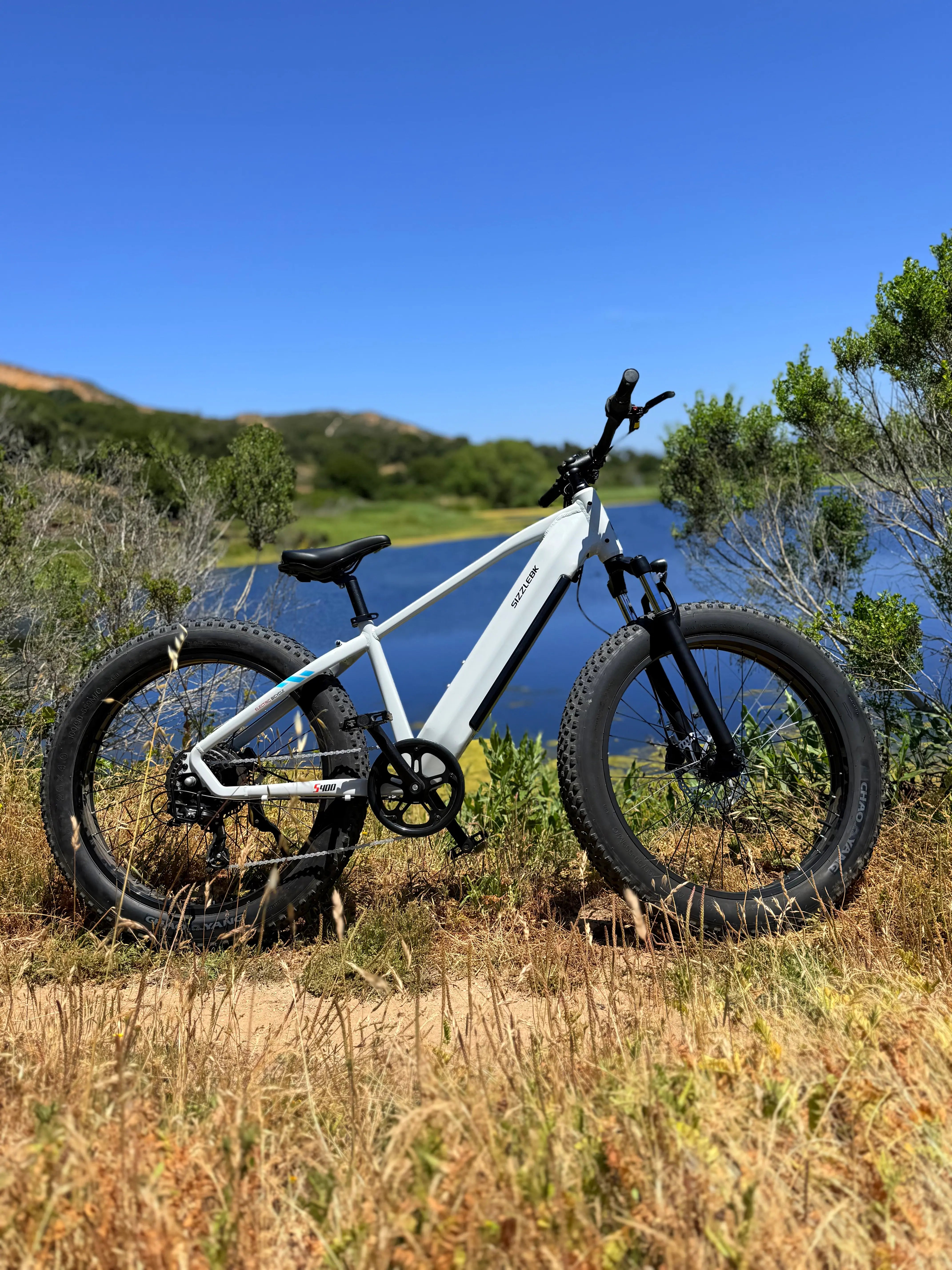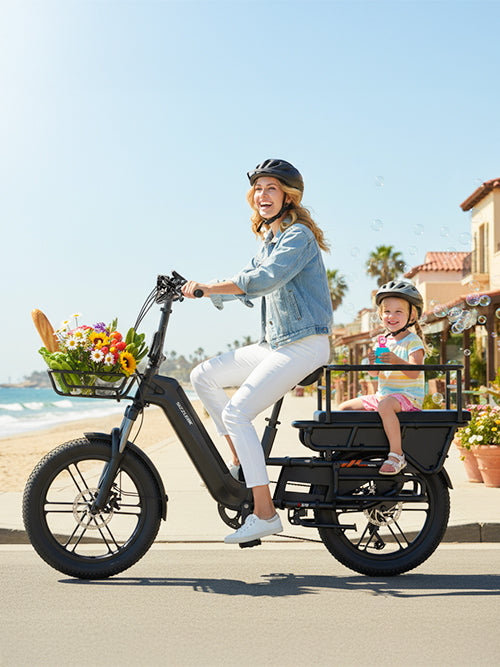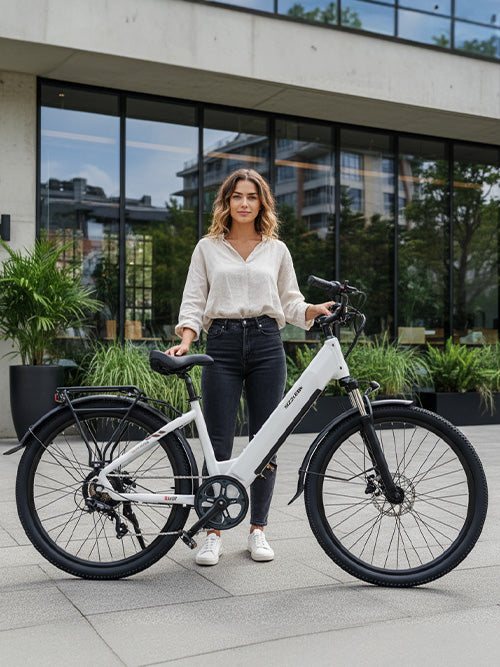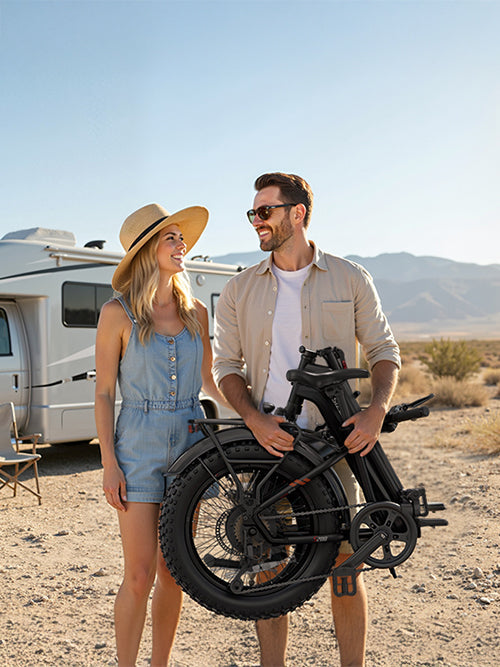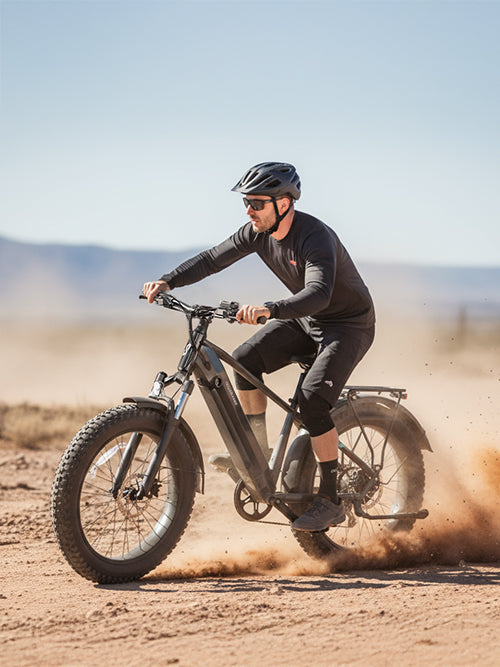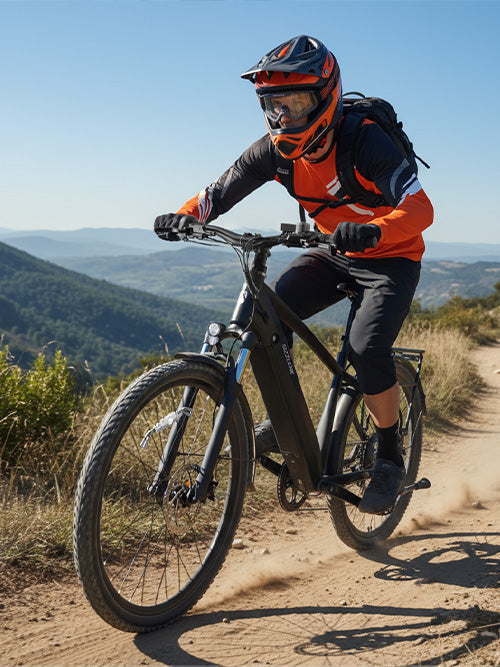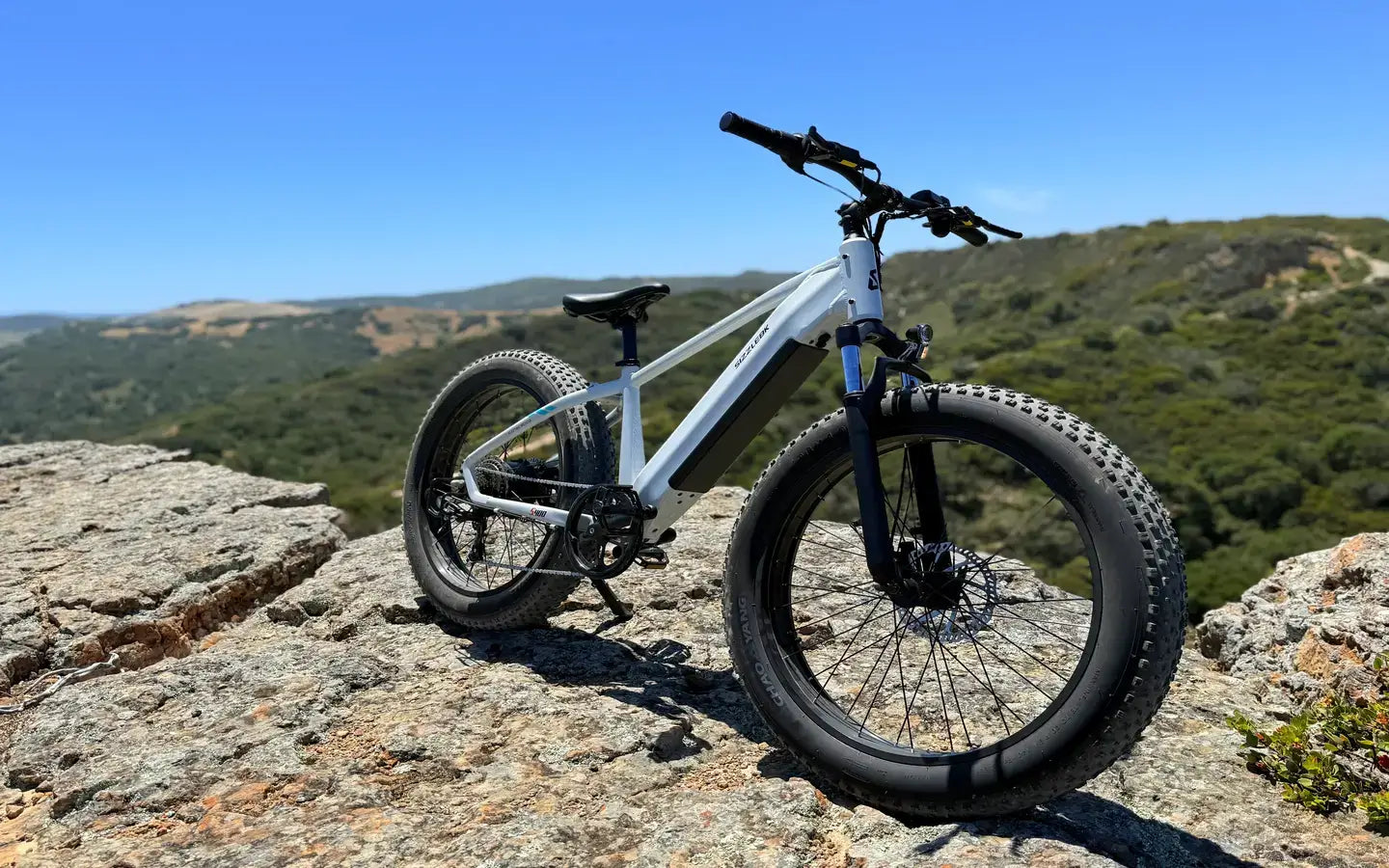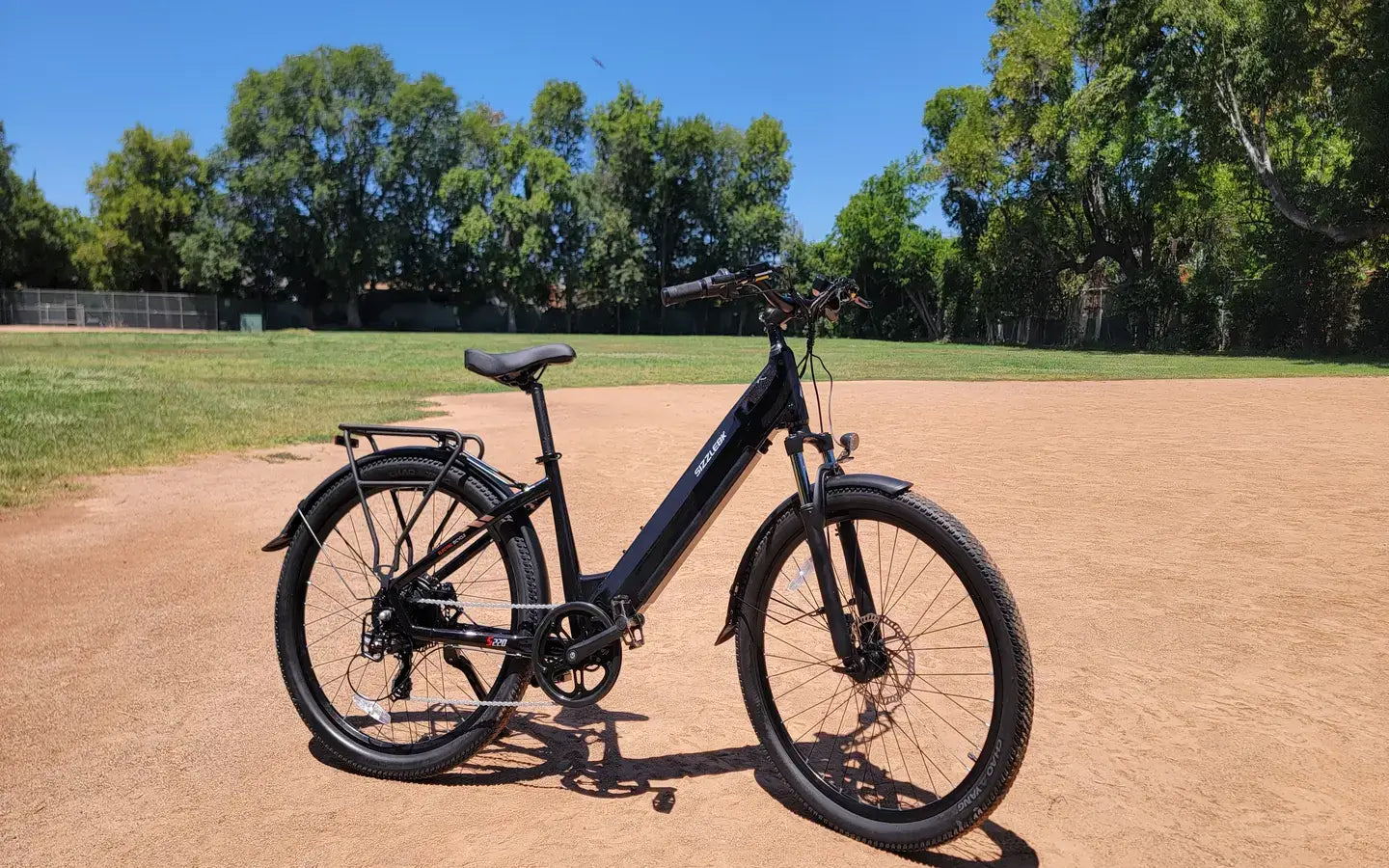Your e-bike’s frame is its backbone – literally. It's not just tubing; it is an important structure that dictates strength, ride feel, weight, safety, and longevity. Electric bike frames must withstand more loads compared to normal bikes. There are the added weights of the motor and battery, as well as extra torque (particularly with mid-drives), and higher speeds and loads. Choosing the proper frame material and protecting it, will give you a better ride, well into the future.
E-Bike Frame Materials: The Building Blocks of Performance
Unlike standard bicycle frames, electric bike frames must handle significantly higher stresses: the weight of the motor and battery, increased torque (especially from mid-drives), and higher overall speeds and loads. Let's break down the common materials:
Aluminum Alloy (Aluminium): The Popular Champion
Pros: Lightweight, relatively affordable, excellent strength-to-weight ratio, highly resistant to rust, stiff for efficient power transfer. Easily formed into complex hydroformed shapes for aerodynamics and stiffness tuning.
Cons: Can transmit more road vibration than steel or carbon (though modern designs mitigate this), can fatigue over extremely long periods under high stress, less impact-resistant than steel. Dents more easily.
E-Bike Suitability: The dominant material for modern ebike frames due to its balance of weight, cost, performance, and corrosion resistance. Excellent for most riders and styles.
Steel (Including Chromoly): The Classic Comfort King
Pros: Renowned for its smooth, damped ride quality (absorbs vibrations), very strong and durable, highly impact-resistant (bends rather than snaps), easily repairable by skilled framebuilders. Hi-Ten (High-Tensile) is basic; Chromoly (CroMo - Chrome Molybdenum steel) is lighter, stronger, and more responsive.
Cons: Heaviest common frame material (especially Hi-Ten), susceptible to rust if not protected, generally less stiff than aluminum (can feel flexy under power). Chromoly is better but still heavier than Alu.
E-Bike Suitability: Great for comfort-focused, durable e-bikes (e.g., cruisers, touring, some cargo bikes) where weight is less critical and ride quality is paramount. Requires diligent rust prevention. Chromoly is preferred over Hi-Ten.
Carbon Fiber: The Performance Powerhouse
Pros: Extremely lightweight, incredibly stiff for maximum power transfer, can be engineered for specific ride characteristics (stiffness in some areas, compliance in others), excellent vibration damping, immune to corrosion.
Cons: Most expensive material, requires complex manufacturing. Can be susceptible to catastrophic damage from sharp impacts or crushing forces (though modern layups are very robust). Repairs are difficult and expensive. Quality varies significantly.
E-Bike Suitability: Found on high-performance and premium e-MTBs, e-road bikes, and lightweight urban e-bikes where minimizing weight and maximizing stiffness/efficiency are top priorities.
Titanium: The Exotic Endurance Expert
Pros: Combines the strength and durability of steel with a weight closer to aluminum. Naturally corrosion-proof, offers a uniquely lively and compliant (yet stiff) ride quality. Extremely long-lasting.
Cons: By far the most expensive frame material, difficult to work with and weld, limited availability.
E-Bike Suitability: Niche material for ultra-premium, custom, or boutique e-bikes where ultimate durability, corrosion resistance, and a sublime ride are worth the significant cost premium.
E-Bike Frame Damage: Causes, Prevention, and Protection
E-bike frames face unique challenges beyond regular bikes. Understanding these threats is key to prevention:
1.The Rust Menace (Primarily Steel Frames):
Causes: Exposure to water, road salt, humidity, and scratches/chips in the paint or protective coatings that expose bare metal. Internal rust can occur if frame drain holes clog.
Prevention & Protection:
Rinse Frequently: Especially after riding in rain, snow, or on salted roads. Pay attention to joints and hidden areas.
Dry Thoroughly: Never store a wet bike. Wipe it down.
Protective Coatings: Apply frame protectors (helicopter tape) to high-impact areas (chainstay, downtube). Use anti-corrosion sprays (like Boeshield T-9, WD-40 Specialist Corrosion Inhibitor) inside steel frames annually, focusing on drain holes and internal tubes.
Touch Up Paint: Immediately repair any chips or scratches in the paintwork to seal the metal.
Proper Storage: Store indoors in a dry place, away from damp garages or outdoors.
2.Loosening Joints & Fasteners (All Frames):
Causes: Constant vibration from the motor, road bumps, and riding stresses. Improper initial assembly or insufficient torque. Fatigue in bolts or frame material over time. Particularly critical around the motor mount, battery mount, and suspension pivots.
Prevention & Protection:
Regular Torque Checks: Invest in a quality torque wrench! Follow the manufacturer's specified torque values (Nm) religiously. Check critical bolts (motor mounts, battery mounts, stem, handlebars, seatpost clamp, suspension linkages) every few rides or at least monthly. Never guess or overtighten!
Thread Locking Compound: Use medium-strength thread locker (like Loctite 243) on key fasteners prone to vibration loosening (e.g., rotor bolts, some motor mount bolts – check manufacturer recommendations first).
Professional Check-Ups: Have a qualified e-bike mechanic inspect the frame and all critical connections during annual servicing.
3.Cracks & Fatigue (All Frames, Especially Under Stress):
Causes: Overloading the bike beyond its rated capacity (especially cargo bikes). Repeated hard impacts (jumping curbs, hard landings). Manufacturing defects (rare but possible). Material fatigue over very long periods or extreme use. Stress concentrations at welded joints or sharp angles.
Prevention & Protection:
Respect Weight Limits: Never exceed the manufacturer's specified maximum system weight (rider + cargo + accessories).
Ride Appropriately: Avoid subjecting a non-suspension or non-MTB e-bike to excessive off-road abuse or large jumps.
Regular Visual Inspections: Frequently and meticulously examine the entire frame, especially around welds, joints, motor mounts, and the head tube/down tube junction. Look for hairline cracks, paint cracks (often spider-webbing), bulges, or deep dents. Use a bright light.
Address Minor Damage Promptly: Small dents or scratches can sometimes be precursors. Monitor them closely.
4.Impact Damage (Dents, Crushes):
Causes: Crashes, dropping the bike, impacts with curbs or obstacles, improper clamping (especially on carbon frames!).
Prevention & Protection:
Careful Handling: Use bike racks correctly. Avoid dropping the bike.
Proper Clamping: Always clamp an e-bike by the seatpost (preferably a cheap alloy one, not carbon) in a repair stand, never by the top tube or downtube, especially with carbon frames.
Frame Protection: Use thick frame protection tape on vulnerable areas like the downtube, chainstays, and fork legs. Consider protective cases for battery downtubes on some models.
Choosing Your Frame Design – Fit for Purpose
The ideal frame shape depends on how you ride:
1.Step-Through (Low-Step):
Pros: Easy mount/dismount, high accessibility.
Best For: Commuting, city riding, riders with mobility concerns, frequent stops.
Trade-off: Slightly less traditional stiffness than step-over (mitigated in modern designs).
2.Step-Over (Diamond/Traditional):
Pros: Maximum frame stiffness & stability, efficient power transfer.
Best For: Sport riding, off-road (hardtails), riders prioritizing performance/feel.
Trade-off: Less convenient for mount/dismount, especially with high top tubes.
3.Folding:
Pros: Ultimate portability/storage, multi-modal travel (bus/train/car trunk).
Best For: Urban dwellers, limited storage, last-mile solutions.
Crucial: Requires regular maintenance (lubrication, torque checks) on folding hinges/latches.
4.Full-Suspension (FS):
Pros: Maximum comfort & control on rough terrain, reduces rider fatigue.
Best For: Mountain biking (e-MTB), technical trails, rough urban paths.
Trade-off: Heavier, more complex (maintenance), more expensive, less efficient on smooth pavement vs hardtail.
Conclusion: Your Frame, Your Foundation
Your electric bike frame is the core of your riding experience. The right ebike frame makes all the difference in your comfort, safety, and riding experience.
Taking the time to choose the right bicycle frame and committing to its maintenance will not only buy you an electric bike, but will ensure many years of enjoyable, reliable and high-performance e-riding.
Explore our latest eBikes with step-through, folding, and mountain frame options—engineered for every rider size and style.
